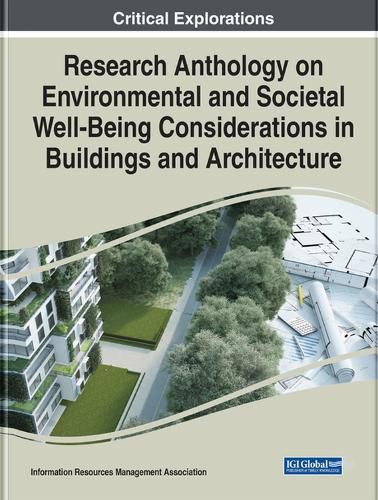Readings Newsletter
Become a Readings Member to make your shopping experience even easier.
Sign in or sign up for free!
You’re not far away from qualifying for FREE standard shipping within Australia
You’ve qualified for FREE standard shipping within Australia
The cart is loading…






This title is printed to order. This book may have been self-published. If so, we cannot guarantee the quality of the content. In the main most books will have gone through the editing process however some may not. We therefore suggest that you be aware of this before ordering this book. If in doubt check either the author or publisher’s details as we are unable to accept any returns unless they are faulty. Please contact us if you have any questions.
When it comes to architecture, there has been a focus on sustainable buildings and human well-being in the built environment. Buildings should not only be environmentally friendly and sustainable, but dually focused on human health, wellness, and experience. This includes considerations into the quality of buildings, ranging from ventilation to thermal comfort, along with environment considerations such as energy usage and material selection.
Specific architectural choices and design for buildings can either contribute to or negatively impact both society and the environment, leading research in the field of architecture to be focused on environmental and societal well-being in accordance with the built environment.
The Research Anthology on Environmental and Societal Well-Being Considerations in Buildings and Architecture focuses on how the built environment is being constructed to purposefully enhance societal well-being while also maintaining green standards for environmental sustainability. On one side, this book focuses on the specific building choices that can be made for the purpose of human well-being and the occupants who will utilize the building. On the other side, this book also focuses on environmental sustainability from the standpoint of green buildings and environmental concerns. Together, these topics allow this book to have a holistic view of modern architectural choices and design.
This book is essential for architects, IT professionals, engineers, contractors, environmentalists, interior designers, civil planners, regional government officials, construction companies, policymakers, practitioners, researchers, academicians, and students interested in architecture and how it can promote environmental and societal well-being.
$9.00 standard shipping within Australia
FREE standard shipping within Australia for orders over $100.00
Express & International shipping calculated at checkout
This title is printed to order. This book may have been self-published. If so, we cannot guarantee the quality of the content. In the main most books will have gone through the editing process however some may not. We therefore suggest that you be aware of this before ordering this book. If in doubt check either the author or publisher’s details as we are unable to accept any returns unless they are faulty. Please contact us if you have any questions.
When it comes to architecture, there has been a focus on sustainable buildings and human well-being in the built environment. Buildings should not only be environmentally friendly and sustainable, but dually focused on human health, wellness, and experience. This includes considerations into the quality of buildings, ranging from ventilation to thermal comfort, along with environment considerations such as energy usage and material selection.
Specific architectural choices and design for buildings can either contribute to or negatively impact both society and the environment, leading research in the field of architecture to be focused on environmental and societal well-being in accordance with the built environment.
The Research Anthology on Environmental and Societal Well-Being Considerations in Buildings and Architecture focuses on how the built environment is being constructed to purposefully enhance societal well-being while also maintaining green standards for environmental sustainability. On one side, this book focuses on the specific building choices that can be made for the purpose of human well-being and the occupants who will utilize the building. On the other side, this book also focuses on environmental sustainability from the standpoint of green buildings and environmental concerns. Together, these topics allow this book to have a holistic view of modern architectural choices and design.
This book is essential for architects, IT professionals, engineers, contractors, environmentalists, interior designers, civil planners, regional government officials, construction companies, policymakers, practitioners, researchers, academicians, and students interested in architecture and how it can promote environmental and societal well-being.